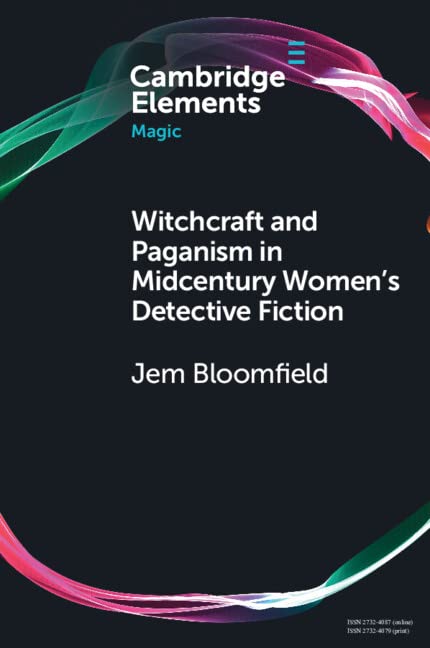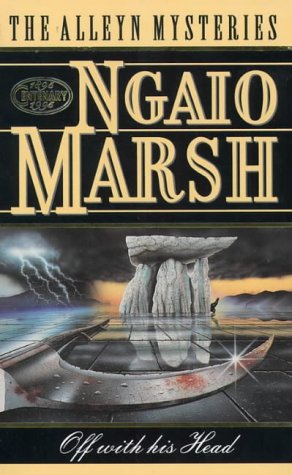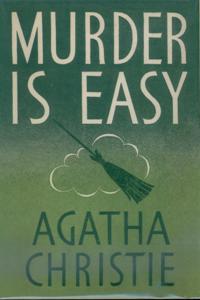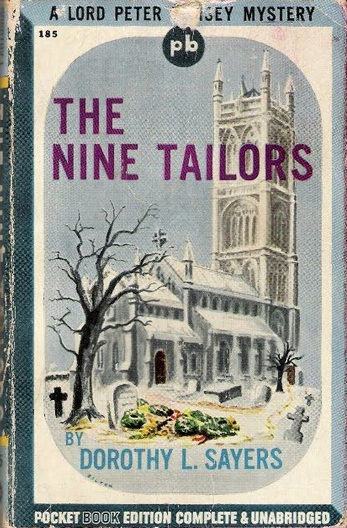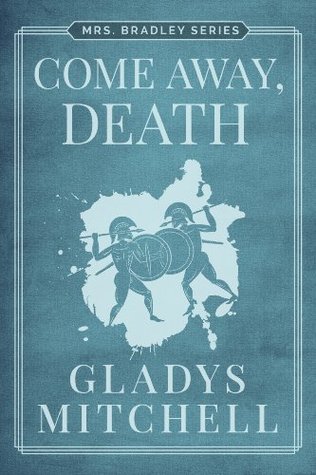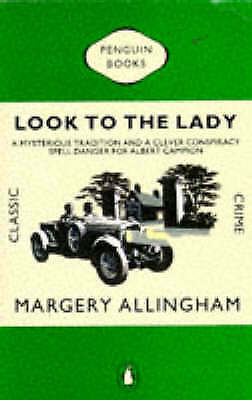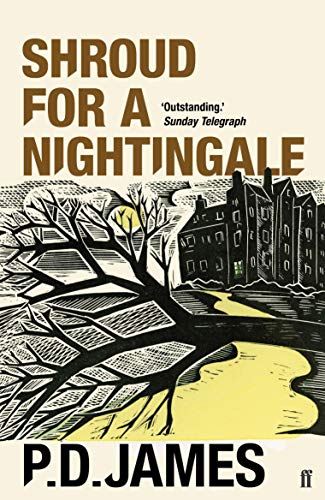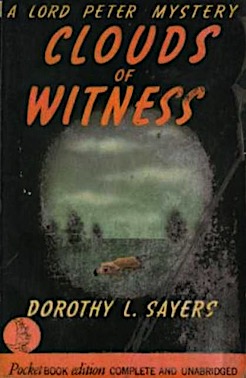Jem Bloomfield, Witchcraft and Paganism in Midcentury Women’s Detective Fiction (Cambridge University Press, 2022), published as part of Cambridge Elements: Elements in Magic (ed Marion Gibson)
Crimeculture is delighted to have had the chance to interview Jem Bloomfield about his excellent new study of witchcraft and paganism in the detective novels of four of the best-known British “Queens of Crime”: Agatha Christie, Ngaio Marsh, Gladys Mitchell and Margery Allingham. To quote from the launch blurb: “The detective stories of the “Queens of Crime” are haunted by witchcraft and paganism. The hero of Agatha Christie’s Murder Is Easy visits a village called “Wychwood” and falls in love with a woman named after a pagan goddess. Gladys Mitchell’s Come Away, Death is dedicated to a friend “whom Artemis bless and Demeter nourish; upon whom Phoebus Apollo shine.” Ngaio Marsh’s Off With His Head revolves around the climax of a folk-dance, when ritual words are muttered and a murder is committed. Margery Allingham’s Look to the Lady depicts the spontaneous rebirth of witchcraft in the depths of the English countryside.”
1. Crimeculture: You’ve done a wonderful job of exploring this fascinating selection of novels by the ‘Queens of Crime’. You very persuasively contextualise their interest in witchcraft and paganism, but also give your readers a lively sense of each of the individual novels. You made me want to return to the literature of the period and read those I haven’t read! What is it in their work that most compels you to read them? Did you have your own favourites amongst the writers you discuss?
Thanks – I’m so pleased you found yourself wanting to return to the books themselves! I always hope that’s the point of literary criticism. One of the major things which draws me to read (and reread) midcentury detective novels is their rich description of the social world they were written in. Not all of them, of course; like any genre, there are some dud books, and some dull writers. But I love the way detective novelists from this era, like Ngaio Marsh or Cyril Hare, will sketch in the intricacies of how people act and react to each other. How they make their way into a railway carriage if there’s already someone there, for example, or how they try to soothe a quarrel when two men have argued in a pub.
There’s a subplot in Marsh’s Off With His Head, about a young woman who has been training as an actress in London, who returns to the small village where her family came from, to heal the breach with the relatives who disowned her mother. It’s a brilliant observation of so many facets of their different social worlds. To her, acting is a profession which marks her as an independent young woman making her way in the world. To the head of the family, it’s tantamount to being a Fallen Woman, and proves that her branch of the family was ruined by leaving the village. She sees the blacksmith’s forge they run as charming and unspoilt, whilst the younger members of the family are trying to sell it to someone who’ll make it into a petrol station.
These books aren’t necessarily framed as studies in human behaviour (the way the literary novels from the same era were), but they do give very vivid accounts of how people lived. I suspect this is something to do with the way the genre emphasizes deceit and pretence. At least one person in every book Is not who they say they are, and is living a parallel life as a murderer. This seems to give authors an incentive to show us the details of what people eat, how they dress, how they behave to each other, because for one person those details don’t ring true. There’s a moment in a J.I.M. Stewart novel when a playwright makes a mental note to write a scene in which someone gives themselves away by not knowing that one asks for “a glass of sherry” but not “a glass of whisky”. J. I. M. Stewart also wrote detective novels under the name Michael Innes, and I always think that moment gives us a glimpse into the midcentury crime writers’ habits of mind.
In fact, Ngaio Marsh is a perfect example of this concern with social detail, since she was both fascinated by English society and very conscious of being on the margins of it. As a New Zealander of that era, she referred to England as “Home”, but had never been there until her late twenties. That’s probably why her novels have such a precise eye for the social dance of English life: she’s almost anthropologically aware of it as an artificial system of behaviour.
That interest in social details also extends into the depiction of small, closed communities and ways of life. The midcentury novel seems to be fascinated by revealing the internal life of groups of people. The bellringers of a country parish in Dorothy Sayers’ The Nine Tailors, the Bohemian household of an artist in Agatha Christie’s Five Little Pigs, the group of fly-fishers in Hare’s Death is No Sportsman. (This continues in later crime fiction: it’s a bit of a standing joke amongst watchers of Midsomer Murders that the detective’s wife is always joining a new hobby group – water-colour painting, amateur dramatics, historical re-enactment – amongst whom there will be a murder.) Aside from the sheer nosiness of wanting to know how other people’s lives work, these novels seem concerned with whether other ways of life mean other values and other moral codes. That title – Death Is No Sportman – anxiously juxtaposes the clubbable male code of “sporting” behaviour with the question of life and death.
A number of these novels revolve around whether those other values are found to be authentic. Poirot can only solve the murder at the heart of The Five Little Pigs because he realizes (as other characters do not) how the disreputable artist Amyas Crale saw the world. Everyone else assumed that his art and his Bohemianism was a way to indulge his tastes for alcohol and extramarital sex. Only Poirot realizes (in a very midcentury notion of the “creative artist”) that, for Crale, the boozing and the shagging was ultimately incidental to his need to paint. The plot of Sayers’ Strong Poison dramatizes the opposite situation, when a supposedly high-minded literary novelist, with lofty ideals about Free Love and artistic independence, turns out to be a bourgeois prig who really wants a wife to take care of him and coddle his talent.
As to favourites, I’m not sure I can choose! I find all four fascinating in different ways. When it comes to rereading them, I probably reach for Christie more often than the others, so I’ll name her.
2. Crimeculture: You mention on Twitter that you had originally included an explanation of why Dorothy Sayers wasn’t part of the study. (“I’m a huge fan of Sayers…but her novels have less witchery in them than the others – I actually had to cut a bit discussing why she was such a notable absence!”). There may not be a short answer to this, but can you give us a general sense of why you think Sayers is less inclined to go in a ‘witchy’ direction? Are the four ‘Queens of Crime’ the only writers of the time whose interests intersect with the themes of your study, or were there others that you didn’t have room for but whose novels relate in intriguing ways to the themes you’re exploring?
That’s an intriguing question, and one which I can only speculate about. (But that won’t stop me giving an opinion. Or several.) My first idea was that Sayers was more religiously devout than the other novelists I’ve written about. She famously left detective fiction, and ended up writing religious plays and Christian apologetics, then translating Dante. Perhaps she found that the sense of another reality or a more mysterious world amidst this one was supplied by the imagery of Christianity, rather than that of witchery and enchantment. I’m not sure that quite covers the facts, though, since Christie was also increasingly devout in her later years. I did wonder whether Sayers’ engagement with her faith was too cerebral to allow her to enjoy the ambiguity which I’ve identified in the witchy detective novel. She wrote in her letters of worrying that she was only in love with the intellectual pattern of Christian theology, rather than the person of Christ. So maybe the witchy mode of fiction, in which the reader and writer could indulge in the idea of enchantment and magic alongside the rational explanation for events, didn’t appeal to her.
It’s certainly not that she was uninterested in the symbolic elements of fiction or the feeling of another world around us. I mentioned above the way the midcentury detective novel is concerned with small communities with their own values and ways of life. The Nine Tailors is a powerful example of that: the shiver of unease which many people report getting from that book seems to come from the idea that entering an obscure parish church might mean walking into a space where our normal values don’t apply. A space roofed by the open eyes of the angels and the open mouths of the bells. She plays around ironically with apocalyptic imagery in Clouds of Witness, and then takes it up in earnest in The Nine Tailors. I think the most likely answer is that Sayers’ imagination was stirred more by apocalyptic and Gothic than by the imagery of paganism or witchery.
The Queens aren’t the only people who indulge in a witchy mode of detective fiction, but I was particularly interested in them. Firstly, as paradigmatic examples of the Golden Age detective novel. If all four of these writers, who are so identified with the form, all kept harping on witchy themes, then there must (I thought) be some connection with the genre itself. This couldn’t just be a personal obsession of a couple of writers, or the general social interest in witchcraft at the time. Secondly, I was struck by the fact that they were female authors writing about witchcraft. (The anonymous peer reviewers whom Cambridge University Press sent the manuscript to encouraged me to explore this idea: they both wanted more explanation of why it mattered that these were a group of women writers.) It’s particularly worth noting that their novels depict witchcraft as potentially attractive, but often contrasted with dangerous and corrupt ritual magic. These novels are very suspicious of the occult or cultish as a way for men to prey on women. They may indulge the image of the witch, but they almost always reject the magician.
There were some other authors I was tempted to bring into the study: when working on Gladys Mitchell I wanted to explore her connections to Helen de Guerry Simpson, and Simpson’s connections (in turn) to Nancy Spain. The back of the Penguin edition of one of Mitchell’s most pagan novels mentions her interest in witchcraft originating from “her friendship with Miss Helen de Guerry Simpson”, as if that tells the savvy reader everything they need to know. Then in Spain’s Poison for Teacher there is (what reads to me like) a sly allusion to Simpson’s mystical tarot-themed novel Cups, Wands and Swords. There is apparently an association in their books (and potentially in the connections across those books) between witchcraft and romantic attraction between women. But I ended up having to confine myself to exploring that within Mitchell’s own books. I also pondered looking at how the next generation of the classic detective novelists, such as Ruth Rendell and P.D. James, touched on witchery and paganism, but there wasn’t space in such a short study.
3. Crimeculture: You write that the rational detective story framework and “the feeling of enchantment” more noticeably coexist in the work of Margery Allingham than in that of the other main writers discussed. When I think of later novelists whose work manifests this sort of ‘double vision’, many of the writers who come to mind share what you call Allingham’s “sense of England as an enchanted place.” Beyond England as well, particularly in Scandinavia, crime writers who include strong supernatural elements (Yrsa Sigurdardottir, Johan Theorin, Ragnar Jonasson) tend to ground their narratives in a countryside saturated with ancestral beliefs in ghosts, premonitions, and other supernatural phenomena. Was Allingham’s work especially central to your thinking about the topic? Do any other writers whose work you’ve explored particularly interest you in this context?
Yes, Allingham (though she doesn’t write a large number of witchy novels) provided me with a clearer vision of the enchanted landscape than the other novelists. When I noticed that aspect of her books, during the research, I began to see it in the other authors, so she acted as a bit of a “key” to that element in the novels. She also foregrounds most clearly the ironic or dialectical aspect of that landscape. She’s always presenting us with an image, and then subverting it, but not cancelling it. For example, I quote this passage in the study, from Look to the Lady:
A little stream ran across the road dividing the two hills; while the cottages, the majority pure Elizabethan, sprawled up each side of the road like sheep asleep in a meadow. It is true that the smithy kept a petrol store housed in a decrepit engine boiler obtained from Heaven knows that dumping ground, but even that had a rustic quality. It was a fairy-tale village people by yokels who, if they did not wear the traditional white smocks so beloved of film producers, at least climbed the rough steps to the church on a Sunday morning in top hats of unquestionable antiquity.
Sentence by sentence, even clause by clause, she builds this vision of a place which is both magical and real. The pastoral image of the sheep contrasted with the petrol store behind the smithy, but then the insistence that the petrol store itself is rustic. The statement that the locals didn’t wear the kinds of smocks you’d see in a film, but the remark that they did wear authentically old-fashioned hats. She’s very clear that the observers (writer and reader together) aren’t being taken in by a sentimental idealised countryside, but that there is nonetheless something very old and mysterious about the place. That dialectic between scepticism and enchantment happens on a plot level in a number of the novels I looked at, but only Allingham seems to construct it on a sentence level.
When it comes to other writers – definitely. I’m intrigued by the way this theme, or topic, appears across authors and indeed across genres. The famously witchy (non-detective) novel Lolly Willowes spends lots of time with its main character imagining (almost hallucinating) the house and garden she will find if she moves to the country. There’s also a touch of the Allingham-style dialectic in that book too, since when she comes to move she finds her depleted capital won’t buy her the house she imagined, and that her attempts to properly immerse herself in the rural world don’t quite work in the way she expected.
I hadn’t thought of this before you asked the question, but two very different novels (which I haven’t read in some years) develop that same theme of the lure and deceptiveness of the countryside at the end of the twentieth century: Phil Rickman’s occult thriller Wine of Angelsand Mavis Cheek’s romance Miss Fytton’s Country Life. Both have their protagonist being sternly “educated” on the difference between the real enchantment of the English landscape, and their images of it.
Back in the midcentury, I’d immediately reach for Kenneth Grahame’s The Wind in the Willows. It has that extraordinary central chapter in which Mole and Ratty experience the presence and divinity of Pan (often cut in modern editions), and so it’s something of a touchstone for the pagan landscape novel. But beyond that chapter, it’s remarkable how much time the characters spend in and around that landscape. Mole burrows his way out of the earth in the opening scenes, meets Ratty who rhapsodizes about being in, around, on or beside the river, they eventually descend into the tunnels below the Wild Wood to meet Badger. And then there are C.S. Lewis’ Narnia novels. The obvious (or notorious) Christian symbolism has sometimes distracted readers from just how much entering Narnia is like entering the enchanted landscape of the midcentury novel. Complete with a wood with a Pan-like figure in it, a stone dolmen on which Aslan is sacrificed, and a set of talking animals.
4. Crimeculture: Your study gives a very convincing and detailed account of the specific ‘witchy’ influences at work in the novels you have examined. You also, in passing, mention the work of Maurizio Ascari (A Counter-History of Crime Fiction: Supernatural, Gothic, Sensational) and its importance in establishing the extent to which the non-rational, supernatural elements of detective fiction are part of the genre’s ‘gothic DNA’. How important do you judge the gothic/crime fiction intersection to be? In your Twitter post on Sayers, you say that you’re working on a bigger study of detective fiction. Will the connections between crime and gothic narratives be part of this future work?
I think the intersection between Gothic and crime fiction is hugely important. Conan Doyle’s The Hound of the Baskervilles gave us a model for how detection and Gothic elements can be mingled in the same story, and it has taken off in the genre since. Sayers’ Clouds of Witness has a whole series of elements – a moor, a village maiden whose chastity is under threat, a dangerous bog, the recurrence of traits in an aristocratic family, a lot of dog imagery – which signals that she’s rewriting Baskervilles for her own purposes. Daphne du Maurier’s Rebecca brings the Gothic classic Jane Eyre to the fringes of crime fiction (is that novel itself crime fiction?), and then Agatha Christie draws on both of them in her Dead Man’s Folly. In the next generation, Simon Brett writes novels in both his “Mrs Pargeter” and ”Fethering” series which read strongly like Rebecca filtered through a modern lens. I think the Gothic strain is a really powerful driving force in the way detective fiction explores the past and the present.
It manifests itself in different ways, as well. That Gothic imagery of exploring a large and ornate old house pops up in P.D. James’ novels, reworked in another way. I kept noticing the way her characters inhabit buildings left over from the past, and which don’t quite fit the way they’re being used now. In Shroud for a Nightingale the oriel window of the Victorian brick building has been awkwardly divided for modern offices, so it no longer works as a window. The same has happened with a room in the grand house by the Thames in her Original Sin. People’s lives happen in the gaps of big, brooding buildings, that weren’t designed for them, and which stand for values which they can no longer uphold. Margaret Mayhew’s more recent novel The Seventh Link provides a tour de force of this kind of uneasy meditation on the past. An old manor house is now being run as a guesthouse by the woman who inherited it, and at the bottom of the land is a derelict WWII air-field where the control tower is maintained by local volunteers. The murder happens whilst a former bomber crew are staying at the manor for a reunion, at the same time as a historical re-enactment group is putting on a fayre in the vicinity (and one of the members will only speak Tudor English to everyone.) It seems that Gothic doesn’t have to involve ghosts and Italian aristocracy to have an influence on this genre!
The bigger study I mentioned is provisionally entitled Crisis in the Text: Agatha Christie, Dorothy L. Sayers and the Allusive Detective Novel. It’s moving away from the supernatural, to look at the ways the Golden Age detective novel used quotation and allusions. Specifically, I’m exploring the allusions to Shakespeare and the Bible in the period’s detective fiction. My idea is that the common texts of the nineteenth century – Shakespeare and the Bible – were crumbling as a shared textual reference point. New methods of interpreting Shakespeare, new translations of the Bible, amongst other causes, meant that the underlying key texts of so much English fiction were no longer as stable. The near-obsessive quoting which appears in some detective fiction, and the trickiness of those quotations, dramatizes the crisis in the status of Shakespeare and the Bible. It both reveals the shaky foundations of shared meaning, and (in some cases) tries to show that the textual world is stable after all. That’s part of the cultural work I think the detective novel is doing in this era. It’s a big hypothesis, and one which I hope to prove via lots of delving into the intricacies of Sayers and Christie novels (as well as Innes, Marsh and others…)
5. Crimeculture: When you write your larger study, are you planning on carrying the discussion forward beyond classic detection, to extend the development of major elements of your Witchcraft and Paganism book?
I certainly am. Having suggested that there’s something fundamentally important about allusion and quotation in the classic detective novel, I’m going to trace the way that habit of allusion continued through the genre. I’ll be looking at the way quotation becomes more and more diffuse, with a less secure sense that Shakespeare and the Bible are the locus of shared meaning. I’m also going to explore the idea that Sayers’ own work became a substitute canon in the detective genre. After writing a dramatic and provocative series of obsessively textual novels, she left the genre presenting it with both a corpus of works and a set of allusive techniques. Thus I’ll be tracing the ways in which later novelists allude to her, rework her novels, borrow images and scenes from her, and react against her. I have been astonished how many detective novelists, from the 1940s to the 2020s, used their engagement with Sayers’ books to develop and define their own sense of what detective fiction should be. It’s another big hypothesis, which will take lots of tracing of allusions and echoes. It will also require me to obsessively reread Sayers’ novels. This will be no hardship.

